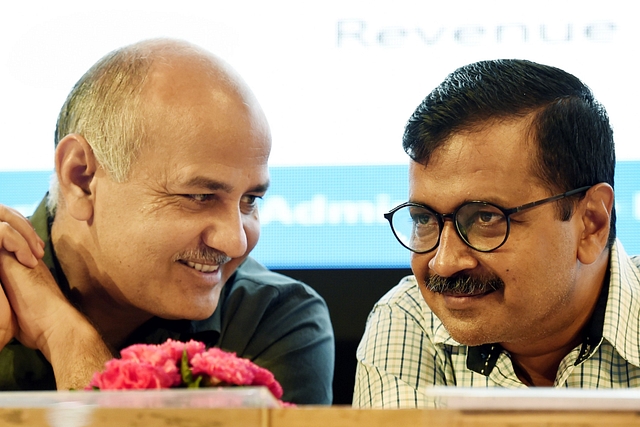
Many Lessons For BJP and Congress To Learn From AAP’s Huge Win In Delhi
The lesson for the BJP is simple: develop a leader before the next elections, so that voters know who they will get as the chief minister.
For the Congress party, the biggest lesson to learn is this: You can’t be seen aligning with the tukde-tukde gangs of Jawaharlal Nehru University, Jamia and elsewhere and expect the core Hindu voter to come to you.
The results of the Delhi state assembly elections, never in any doubt, have many lessons for the Aam Aadmi Party (AAP), the Congress and Bharatiya Janata Party (BJP). Primarily for the latter.
The very fact that Delhi voted decisively for the BJP in the recent Lok Sabha elections and equally decisively for AAP in the assembly elections implies that voters now make a clear distinction between the two elections. They wanted Narendra Modi to run the country and Arvind Kejriwal Delhi.
But this conclusion is too simplistic, for it gives too much importance to Kejriwal’s love affair with the Delhi voter and too little to the fact that the BJP did not have a face to project as chief minister.
The lesson for the BJP is simple: develop a leader before the next elections, so that voters know who they will get as the chief minister. The time to get a face is not a few days before the vote (as it did with Kiran Bedi in 2015), but years ahead of it, so that he or she has the ability to establish his/her credentials both within the party and with the voter.
While the BJP has won even without a face in some states (UP in 2017, and Maharashtra in 2014, for example), in a media-driven world, voters want to know who will be their chief minister after the election. People may have party preferences, but party voters also need to know who their leader will be.
If the BJP had a face to project, then the efforts of the party’s cadre and Hindutva agenda would have worked to its advantage. Right now, the BJP has indeed got a lot of votes, but very few seats.
Also, polarisation is a double-edged sword: an important reason for Kejriwal’s win is the counter-polarisation of Muslims towards the party. Congress voters shifted to AAP, as is evident from the very poor showing of the party in Delhi, with less than 5 per cent of the popular vote. In a two-horse race, polarisation produces a decisive verdict one way or the other.
The second lesson to learn – again for the BJP – is to not let your emotions ruin your strategy. Doing and saying the right things is fine, but you also have to avoid doing the wrong things. Consider how quickly Kejriwal learnt his lesson after his defeat in the 2017 Delhi municipal elections. He spent the first three years of his tenure (2015-17) taking on Modi; but after his party’s defeat in 2017, he changed his tune. He eschewed abuse of Modi, and avoided being dragged into Hindu-Muslim politics.
This is smart. If your opponent’s calling card is nationalism and Hindutva, you cannot beat him in his own game. This is why Kejriwal took no position on the Citizenship Amendment Act or Shaheen Bagh. He won by focusing on his own message of development, avoiding distractions that would have shifted the playing field to the BJP’s core areas. He avoided playing on the rival’s turf. The Congress party failed to do so, and lost out completely.
But there are lessons for Kejriwal too. The results show that AAP has won in the core areas of urban Delhi, and lost votes in the peripheral and semi-rural seats. He can’t be all things to all people; no party can be that. His best bet is to position himself and his party as urban. Trying to play the rural card for national-level expansion will be self-defeating, for if he does so, he will find new challengers, including new rivals in many caste- and region-based parties.
AAP’s strategy should be to expand in the urban areas of other states. It will fail by becoming one more plain-vanilla “national” party that tries to be both urban and rural.
Kejriwal also needs to know that while the anti-Modi media may be cheering him on, the regional parties will not want him to grow beyond Delhi for their own reasons. They know that if he grows beyond Delhi, they will have to compromise their own regional bases to accommodate him.
For the Congress party, the biggest lesson to learn is this: you can’t win by running with the hares and hunting with the hounds. You can’t be seen aligning with the tukde-tukde gangs of Jawaharlal Nehru University, Jamia and elsewhere and expect the core Hindu voter to come to you.
In Delhi, the Congress probably allowed its own votes to go towards AAP in order to stop the BJP, but in the long term, AAP and Congress will grow only at the cost of one another.
The party knows it has drawn a dud in Rahul Gandhi and even Priyanka Gandhi, but can’t say so openly. Its future lies outside the Gandhi family. The Gandhi family is heading for the dustbin of history.